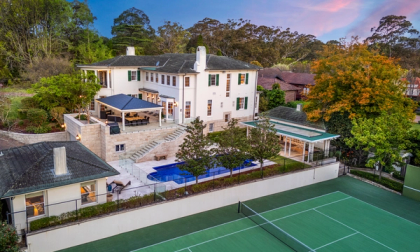
Positive gearing property: A guide for Australian investors
Getting involved in the property market? Congrats. There’s a challenging but satisfying road ahead. And (if you do things the right way) a rewarding one, too.
We always suggest being conservative when you’re just getting started—looking for a property with the potential for consistent rental returns without introducing enormous amounts of risk. Doing so will let you build your knowledge without throwing your finances at the deep end.
A positively geared property is a way to do just that. Do it right, and it’ll let you make a steady profit. And that’s without introducing unnecessary risk. It involves buying a property that rents out for more money than it costs you to maintain each month.
Sounds pretty simple. But there’s plenty to consider. That’s why we have compiled this guide. It’ll explain the concept of ‘positively geared property.’ It will also explain whether it’s right for you as an investor and what you should consider. Let’s dive in.
What is a positively geared property?
The simple answer? It’s a process of buying a property that turns more profit than it costs to maintain.
Say you rent out a property for $1500, for example. Its monthly expenses only come to $1200. That property is positively geared. It generates $300 of passive income a month.
Expenses in this context include anything you need to pay before tax. For instance:
- A home loan repayment that you used to buy the property.
- Any additional fees for property management.
- Standard maintenance and repair costs.
Purchasing a positive-geared property is usually a short-term investment strategy. Many buyers use it to generate immediate returns. Others like to use it as a source of passive income over a longer period.
Naturally, a positively geared property is the opposite of a negatively geared property. That’s a property investment in which the money made by renting out the property is lower than the cash it costs to maintain. With a negatively geared property, the investor is making a loss before tax implications.
Why would anyone buy a negatively geared property?
Great question. It seems illogical that any buyer would choose a negatively geared investment if they’re destined to make a loss each month. But there are two things to consider here.
First, Australia is one of several countries that lets you claim your net rental loss as a tax deduction. For instance, if you were losing $400 a month on your property, you could claim that back in the next income year.
But this still only helps the landowner break even. Where does the profit come in?
It all comes down to capital gains. The buyer purchases the property when the market is in a downturn. They hold the property and attempt to break even in the meantime. Then, when property values are rising, they sell the tenanted property via capital growth to turn a profit.
This is a riskier, longer-term investment strategy and isn’t as lucrative in the short run as purchasing a positively geared property. However, negatively geared properties are much more readily available than positively geared properties.
As such, it’s a riskier but more accessible strategy that can still lead to significant returns.
Why consider positively geared property?
Let’s start with benefits. The advantages of positive gearing. Here are three compelling reasons to consider.
Steady income
Positively geared properties are self-sustaining. They provide a steady stream of income. This can be used to supplement your existing income or pay off the property’s mortgage.
We view positive geared rental properties as one of the best ways to boost financial security without taking headache-inducing risks.
The steady income stream starts rolling in from day one, too. There’s no need to wait for the property’s value to increase before you start seeing a return on your investment.
Tax benefits
The rental income you gain from your property is taxable. However, the costs associated with running the property are tax deductible. You can claim money back for expenses like mortgages, maintenance, and fees. This lowers your tax bill. It also makes your profit margin larger—always a good thing.
Borrowing power
Having a positive cash flow property is a great sign in the eyes of lenders. This means you’ll have greater borrowing power if you ever want to take out a loan to add to your property portfolio. Handy stuff! You can also use a borrowing power calculator to estimate how much you might be able to borrow based on your positive cash flow and other financial factors.
Understanding the risks of positive geared property
We need to clarify that positively geared property is less risky but not risk-free. There are always risks. Here are a few disadvantages of positive gearing to think about.
Market fluctuations
As with every property-purchase situation, you’re relying pretty heavily on the market doing what you want it to. If property value rises, you’re in the money—happy days.
If property value falls, though, the value of your investment decreases. In some cases, you might end up with a property that is no longer positively geared. Or, at the very least, struggling to find renters who will pay enough to keep your profits steady.
Interest rates
Your expenses can be greatly impacted by interest rates. Rising interest rates mean more money spent on your mortgage repayments. That equals less profit.
Our advice? Always have a buffer when calculating the potential returns on your property. Doing so ensures you’ll still stay positively geared even if increasing rates catch you off.
Struggling to find a property
Positive geared properties are the perfect find. Naturally, that means everyone wants to find them. Supply is low and demand is high. That means competition is fierce and it can be a challenge to find a property.
This isn’t a risk per se—more a barrier to entry. As long as you’re willing to remain patient and wait for the right moment, you can overcome this hurdle. Alternatively, negatively-geared properties are far more abundant. It just depends on where your priorities lie.
Vacancies
Stating the obvious: You need someone living in your property to generate any money from it. Struggling to find tenants? You’ll be paying out of pocket and losing money.
Work with an experienced real estate agent to support you. They can help you market the property and minimise vacancy rates.
How to find a positively geared property
Checked the benefits of positively geared properties? Reviewed the risks? Ready to go ahead? Great! You’re ready to start investing in a positively geared property.
We mentioned this earlier, but we want to reiterate it: Positively geared investment properties aren’t always easy to find. They’re incredibly popular, so there’ll always be competition.
Still, with a bit of determination, you’ll have every chance of getting involved and securing a stable passive income. Here are some strategies to help.
Choosing a location
First thing. Location is crucial when picking a positively geared property. Here are a few things to consider.
- Choose an area with recent sales that is in high demand. These areas have higher rental values. That increases your chance of charging a premium for rent and also your chance of securing a tenant fast.
- Choose an area with good infrastructure. If your area has shops, schools, public amenities, and solid transportation, people will want to live there.
- Choose an area with reasonable property prices. It goes without saying, but you want to pick a place with property prices that align with your budget.
Choosing a property
Narrowed down some potential locations? Good stuff. Time to find a property. Here’s what we recommend.
- Start small. Choose a property that you won’t need to renovate or maintain all the time. Nothing eats profit like an old house that constantly needs repairing. Apartments and townhouses are a good place to start. These properties tend to be more recently developed and in demand.
- Consider facilities. A property with outdoor parking or surrounded by a good amount of green space can lead to more demand and higher rental prices, which is a win-win.
- Check vacancy rates. This is a good indicator of how viable a purchase is. If a property has low vacancy rates? Great, you’re onto a winner. If the latest occupant left nine months ago? You might not have much luck finding a tenant.
Ultimately, though, your goal is to generate the most rental income while keeping expenses to a minimum. Every property is different. The only real way to find the right property is to do your own research and pick one that will net you the greatest yield.
The bottom line
Finding a positively geared property doesn’t have to feel like searching for bigfoot. Do your research and cast a wide net, and you’ll have a great chance of locating a solid investment.
When you find one, you’ll unlock the door to a steady stream of income and several tax benefits. You’ll also have the chance to sell your property for an even bigger profit when its market value increases.
How DiJones can help
You’ve done your research. Now, the hard work begins. Want some extra support? We’ve worked for Australia’s homebuyers since 1992. We can help you find the right property or close the deal. Connect with us today and ask away.
Was this content helpful to you?





